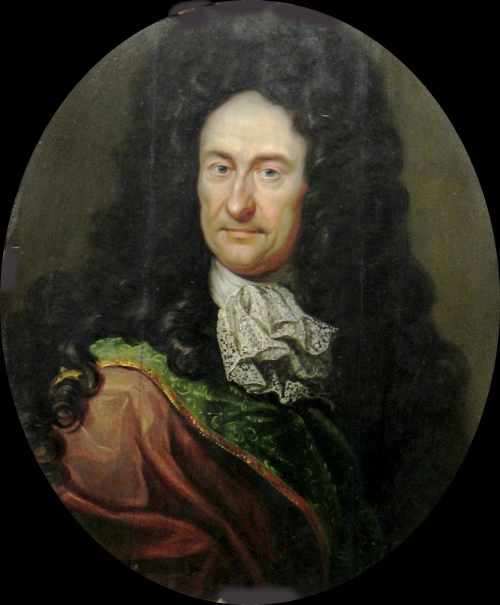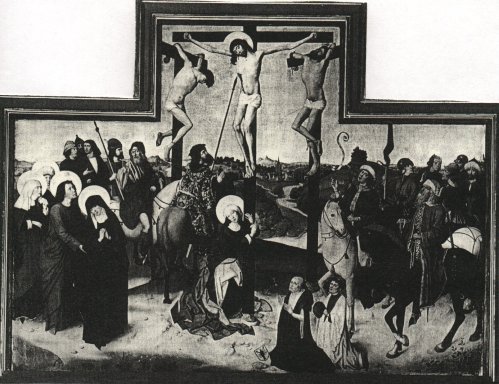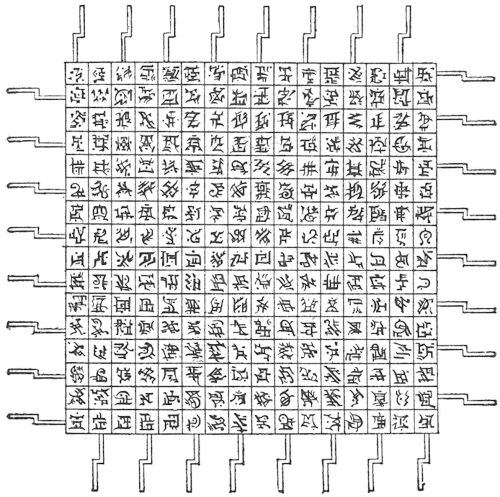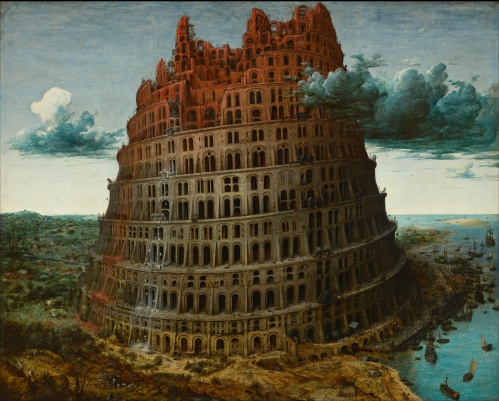Eco: From Leibniz to the Encyclopédie

Johann Friedrich Wentzel (1670-1729), Gottfried Wilhelm Leibniz (1646-1716), circa 1700. This work is in the public domain in its country of origin and other countries and areas where the copyright term is the author’s life plus 100 years or less.
“In 1678 Leibniz composed a lingua generalis (in Couturat 1903). After decomposing all of human knowledge into simple ideas, and assigning a number to each, Leibniz proposed a system of transcription for these numbers in which consonants stood for integers and vowels for units, tens and powers of ten:

Umberto Eco, The Search for the Perfect Language, p. 270.
In this system, the figure 81,374, for example, would be transcribed as mubodilefa. In fact, since the relevant power of ten is shown by the following vowel rather than by the decimal place, the order of the letters in the name is irrelevant: 81,374 might just as easily be transcribed as bodifalemu.
This system might lead us to suspect that Leibniz too was thinking of a language in which the users might one day discourse on bodifalemu or gifeha (= 546) just as Dalgarno or Wilkins proposed to speak in terms of nekpot or deta.
Against this supposition, however, lies the fact that Leibniz applied himself to another, particular form of language, destined to be spoken–a language that resembled the latino sine flexione invented at the dawn of our own century by Peano.
This was a language whose grammar was drastically simplified and regularized: one declension for nouns, one conjunction for verbs, no genders, no plurals, adjectives and adverbs made identical, verbs reduced to the formula of copula + adjective.
Certainly, if my purpose were to try to delineate the entire extent of the linguistic projects undertaken by Leibniz throughout the course of his life, I would have to describe an immense philosophical and linguistically monument displaying four major aspects:
(1) the identification of a system of primitives, organized in an alphabet of thought or in a general encyclopedia;
(2) the elaboration of an ideal grammar, inspired probably by the simplifications proposed by Dalgarno, of which the simplified Latin is one example;
(3) the formulation of a series of rules governing the possible pronunciation of the characters;
(4) the elaboration of a lexicon of real characters upon which the speaker might perform calculations that would automatically lead to the formulation of true propositions.
The truth is, however, that by the end of his career, Leibniz had abandoned all research in the initial three parts of the project. His real contribution to linguistics lies in his attempts at realizing the fourth aspect.
Leibniz had little interest in the kinds of universal language proposed by Dalgarno and Wilkins, though he was certainly impressed by their efforts. In a letter to Oldenburg (Gerhardt 1875: VII, 11-5), he insisted that his notion of a real character was profoundly different from that of those who aspired to a universal writing modeled on Chinese, or tried to construct a philosophic language free from all ambiguity.
Leibniz had always been fascinated by the richness and plurality of natural languages, devoting his time to the study of their lineages and the connections between them. He had concluded that it was not possible to identify (much less to revive) an alleged Adamic language, and came to celebrate the very confusio linguarum that others were striving to eliminate (see Gensini 1990, 1991).
It was also a fundamental tenet of his monadology that each individual had a unique perspective on the world, as if a city would be represented from as many different viewpoints as the different positions of its inhabitants.
It would have been incongruous for the philosopher who held this doctrine to oblige everyone to share the same immutable grillwork of genera and species, without taking into account particularities, diversities and the particular “genius” of each natural language.
There was but one facet of Leibniz’s personality that might have induced him to seek after a universal form of communication; that was his passion for universal peace, which he shared with Lull, Cusanus and Postel.
In an epoch in which his english predecessors and correspondents were waxing enthusiastic over the prospect of universal languages destined to ease the way for future travel and trade, beyond an interest in the exchange of scientific information, Leibniz displayed a sensitivity towards religious issues totally absent even in high churchmen like Wilkins.
By profession a diplomat and court councillor, Leibniz was a political, rather than an academic, figure, who worked for the reunification of the church. This was an ecumenicism that reflected his political preoccupations; he envisioned an anti-French bloc of Spain, the papacy, the Holy Roman Emperor and the German princes.
Still, his desire for unity sprang from purely religious motives as well; church unity was the necessary foundation upon which a peaceful Europe could be built.
Leibniz, however, never thought that the main prerequisite for unity and peace was a universal tongue. Instead, he thought that the cause of peace might be better served by science, and by the creation of a scientific language which might serve as a common instrument in the discovery of truth.”
Umberto Eco, The Search for the Perfect Language, translated by James Fentress, Blackwell. Oxford, 1995, pp. 269-1.




